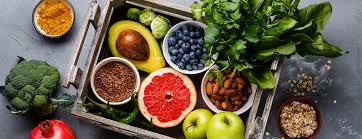
Breaking News
 First-ever drug to repair DNA and regenerate damaged tissue is here
First-ever drug to repair DNA and regenerate damaged tissue is here
 BRICS: Announces the "UNIT" a gold backed "money."
BRICS: Announces the "UNIT" a gold backed "money."
 Trump threatens sanctions on Russia and Ukraine if peace talks collapse
Trump threatens sanctions on Russia and Ukraine if peace talks collapse
 Mega Data Centers Carry Secret Health Risks
Mega Data Centers Carry Secret Health Risks
Top Tech News
 Build a Greenhouse HEATER that Lasts 10-15 DAYS!
Build a Greenhouse HEATER that Lasts 10-15 DAYS!
 Look at the genius idea he came up with using this tank that nobody wanted
Look at the genius idea he came up with using this tank that nobody wanted
 Latest Comet 3I Atlas Anomolies Like the Impossible 600,000 Mile Long Sunward Tail
Latest Comet 3I Atlas Anomolies Like the Impossible 600,000 Mile Long Sunward Tail
 Tesla Just Opened Its Biggest Supercharger Station Ever--And It's Powered By Solar And Batteries
Tesla Just Opened Its Biggest Supercharger Station Ever--And It's Powered By Solar And Batteries
 Your body already knows how to regrow limbs. We just haven't figured out how to turn it on yet.
Your body already knows how to regrow limbs. We just haven't figured out how to turn it on yet.
 We've wiretapped the gut-brain hotline to decode signals driving disease
We've wiretapped the gut-brain hotline to decode signals driving disease
 3D-printable concrete alternative hardens in three days, not four weeks
3D-printable concrete alternative hardens in three days, not four weeks
 Could satellite-beaming planes and airships make SpaceX's Starlink obsolete?
Could satellite-beaming planes and airships make SpaceX's Starlink obsolete?
Paul Pitchford's "Healing with Whole Foods" reveals the transformative power of food

This groundbreaking work has inspired countless individuals to rethink their relationship with food, emphasizing its healing potential and the importance of personalized dietary choices. It emerged from Pitchford's deep study of both Western and Eastern dietary traditions, reflecting a growing recognition in the late 20th century of food's role in health.
A pivotal moment came when the U.S. Surgeon General acknowledged the dangers of poor eating habits, linking them to heart disease, stroke, diabetes and even cancer. Pitchford's work builds on this understanding, arguing that dietary changes rooted in ancient principles can lead to remarkable improvements in well-being. Rather than promoting a one-size-fits-all diet, the book encourages readers to identify foods that address their unique imbalances and enhance vitality.
At the heart of "Healing with Whole Foods" is the integration of Oriental traditions with contemporary nutrition. Pitchford introduces food therapies as a slow but profound way to influence the body's systems, contrasting them with the quicker effects of herbs or medicines. The book serves as a guide for self-diagnosis, helping readers discern which foods best suit their constitution and health needs.
A key concept is the yin-yang principle, which categorizes foods based on their properties – detoxifying foods for those with excess toxins, building foods for deficiencies and so on. This system remains effective even without a formal medical diagnosis, offering a practical framework for dietary choices.
The Principle of Extremes further enriches the book's philosophy, illustrating how balance is achieved through opposites. For instance, extreme activity leads to rest, and extreme age often brings a return to childlike qualities. This principle underscores the dynamic interplay of forces in nature and the body, reinforcing the idea that health is about equilibrium.
Pitchford also bridges Eastern and Western food therapies. He highlighting how the West focuses on macronutrients like proteins and fats, while the East emphasizes food's energetic qualities – warming, cooling, moistening or calming. Understanding these subtleties, he argues, is essential for using food as medicine.
Central to Pitchford's approach is a diet centered on whole grains and vegetables, staples of traditional diets worldwide. He celebrates the healing attributes of complex carbohydrates and advocates for a diverse intake of grains, legumes, sea vegetables, nuts and seeds.

 First totally synthetic human brain model has been realized
First totally synthetic human brain model has been realized Mach-23 potato gun to shoot satellites into space
Mach-23 potato gun to shoot satellites into space

